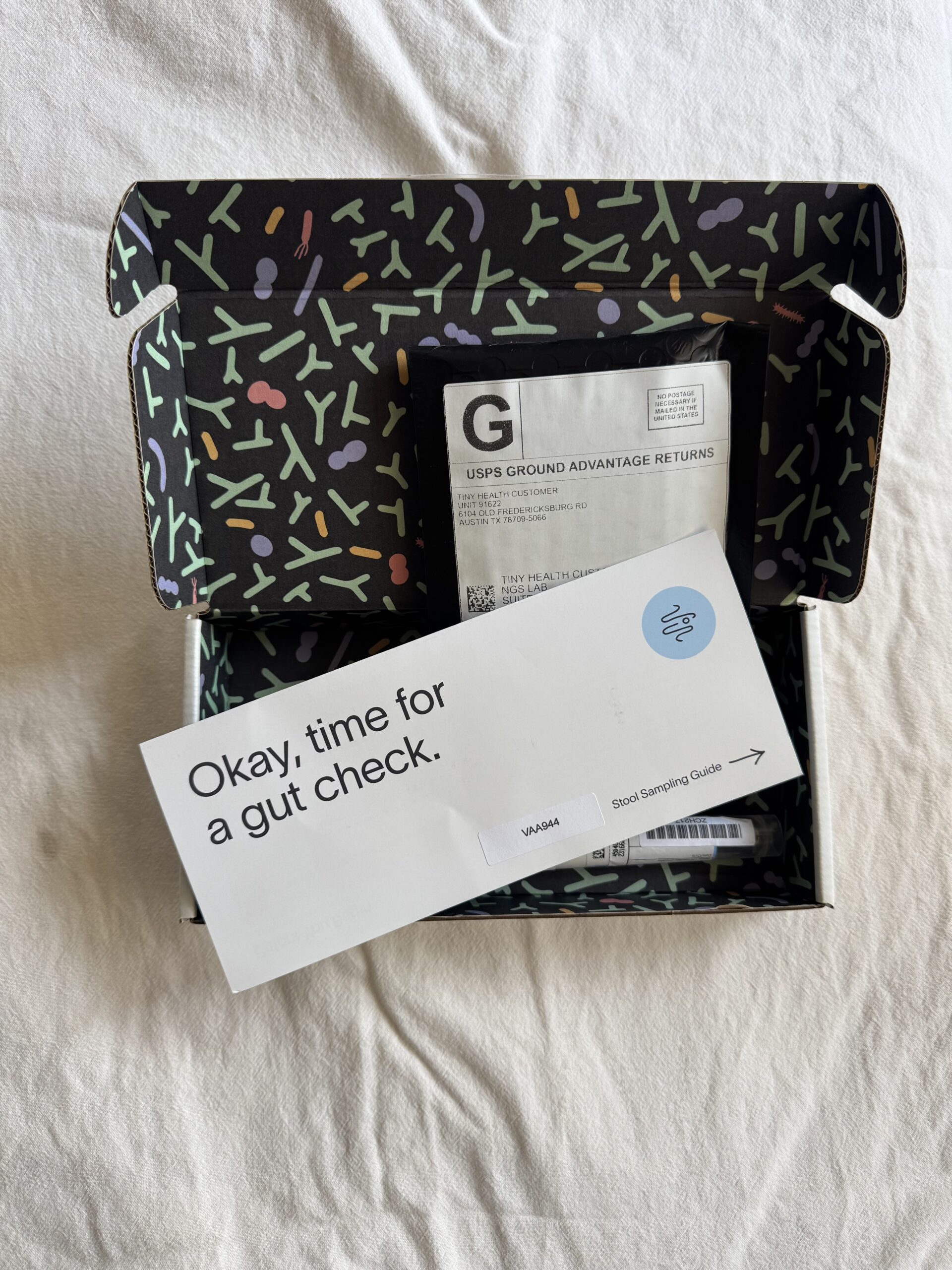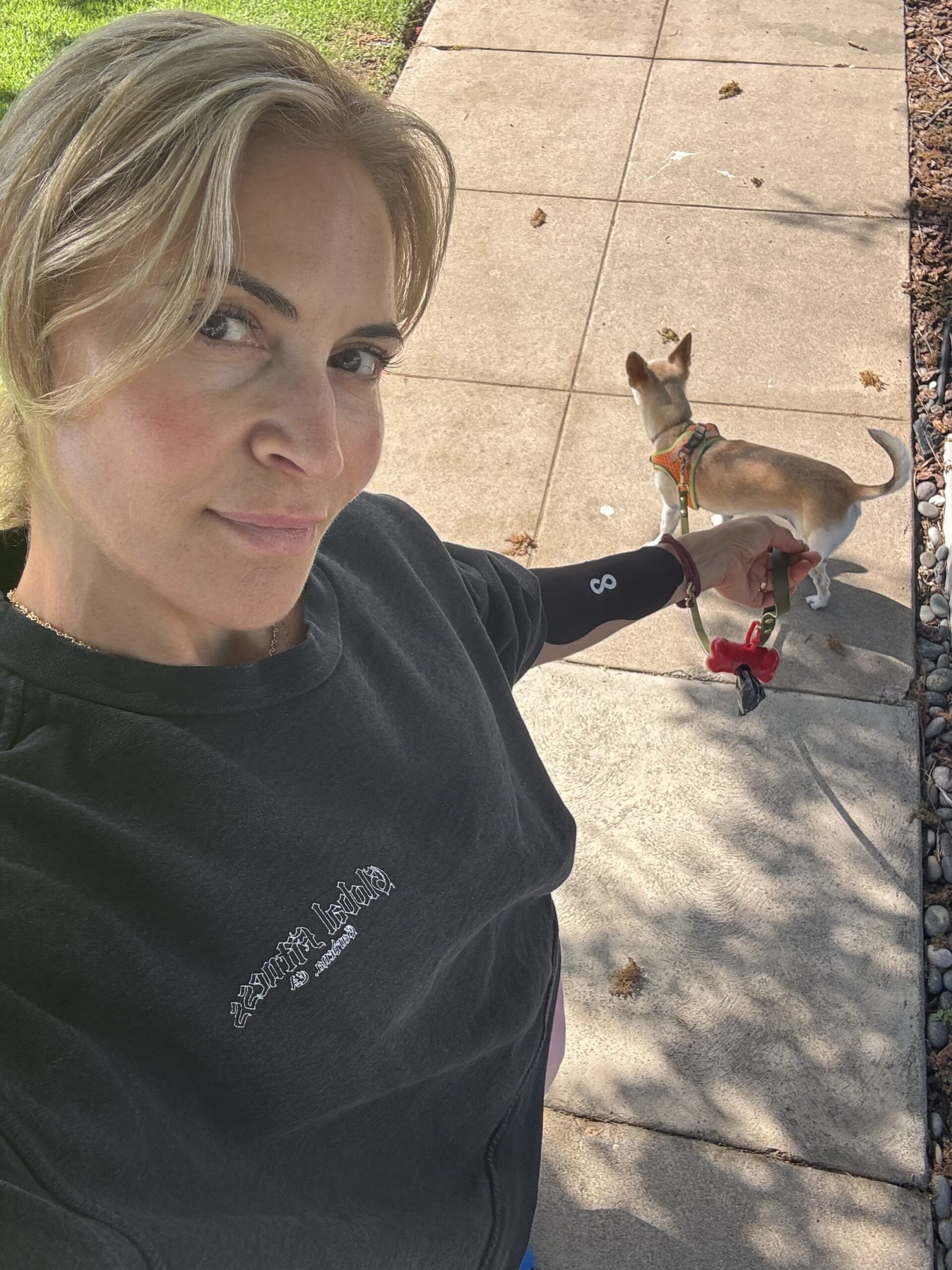How To Use InsideTracker For At-Home Testing
Good Gear editors endorse products we’ve personally researched, tested, and genuinely love. Learn more about our methodology and business model here.
GOOD GEAR RATING — 7/10 STARS
Summary: I used InsideTracker’s telehealth and app-based products to get bloodwork for the first time in years, all remotely. The service alone wasn’t enough to address my health issues but it pointed me in the right direction.
PROS
- InsideTracker provides a modern experience with good attention to detail
- Great reminders and email communication throughout the process
- Easy asynchronous prescriptions that do not require a phone call or visit
- Intuitive app that will track ongoing results over years
- No subscription costs for the app after an initial test purchase
CONS
- Quite expensive at $699 per test
- This depends on what you’re looking for, but it is more focused on tracking than treatment
- I ultimately needed a follow-up appointment (with another provider) to fully understand my results and plan
It had been eight years since my last blood draw. Like many millennials, I don’t have a regular doctor and tend to neglect routine physicals. There was a period when I got routine checks at work, but that ended when I left my first corporate job. Without the built-in convenience, blood work fell to the bottom of my priority list.
I didn’t think much about my doctor drought until this year when I started tracking my Heart Rate Variability (HRV), which I soon found was low for my age. (My HRV falls in the 30s and 40s.) At the same time, I noted that I was getting colds more often. I clearly needed a check-in. I of course wanted to rule out anything concerning but I also wanted to understand if there were simple adjustments that could better support my health.
“I wanted something different that would fit my lifestyle, keep me out of LA traffic and give me more access to my results.”
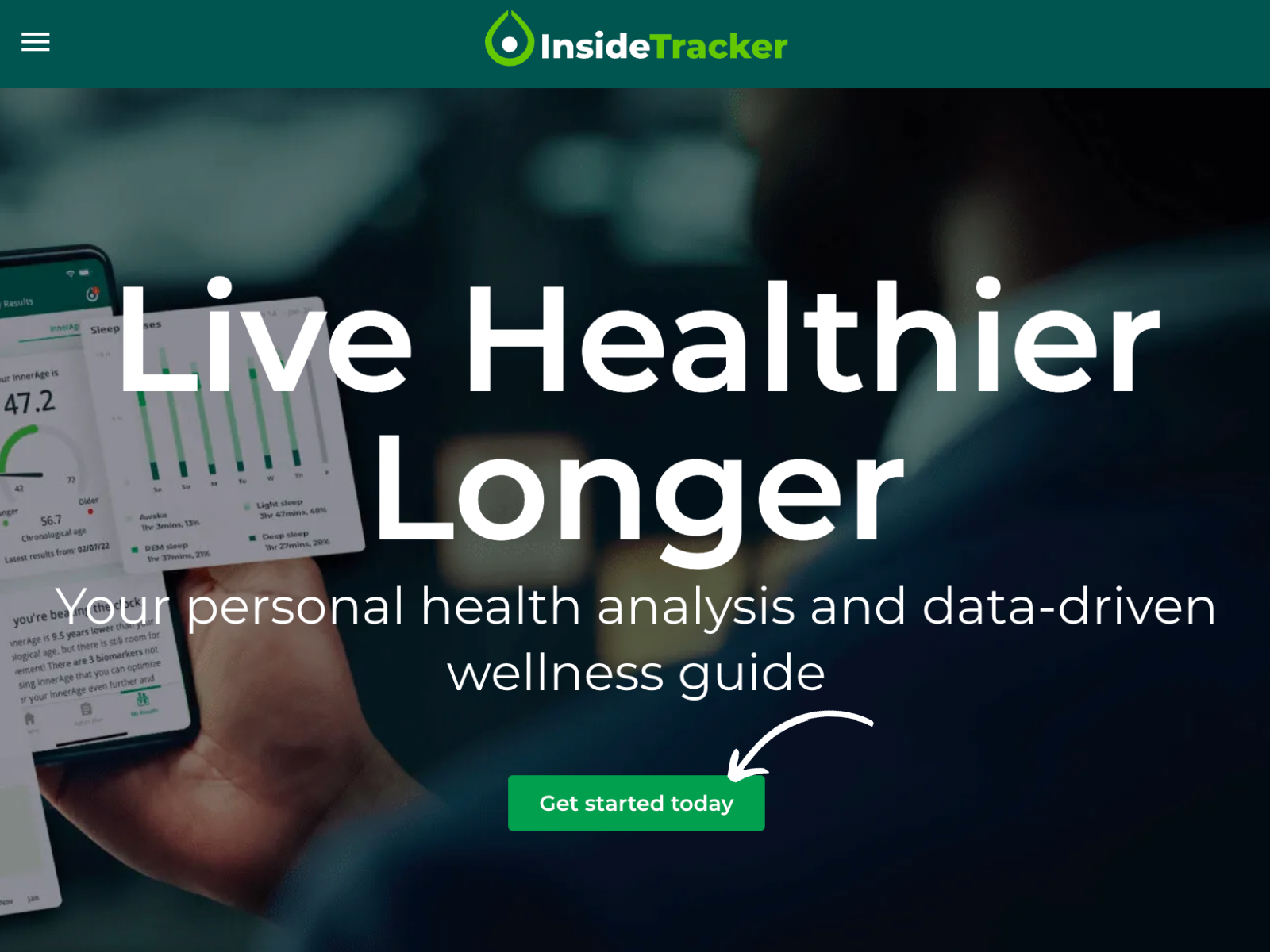
There was just one problem: Because I don’t have a primary doctor, I’d have to use ZocDoc or call my insurance provider to find someone. I’d then need to attend an appointment (likely in person) and explain to the primary doctor that I want bloodwork. Depending on the doctor, they would likely write a lab slip, send me elsewhere to get the bloodwork done, and then call me or schedule an additional follow-up to talk about the results. While my insurance plan might cover most of this process with a minor copay, the whole ordeal would involve a lot of steps, including time spent driving and attending appointments. And, after all that, I might still be left with a pile of indecipherable data from the draw.
I wanted something different that would fit my lifestyle, keep me out of LA traffic, and give me more access to my results. That’s when I learned about InsideTracker.
About InsideTracker
InsideTracker is one one-part medical concierge and one-part data platform. It was founded in 2009 and has an advisory board full of heavy hitters from Yale, Harvard, and MIT. The company’s mission is to help people add years to their lives by optimizing their bodies from the inside out.
Founder Gil Blander, Ph.D. described the early days of InsideTracker as a scientific experiment. He and colleagues started with an in-depth process to determine which biomarkers in our blood matter most. According to Blander, we do not have enough blood in our body to test every biomarker so we have to be focused. Over years of work, he and a team of scientists narrowed the list to 48 critical biomarkers. With that list in hand, they set out to build a tracking software that could chart a person’s health over time.
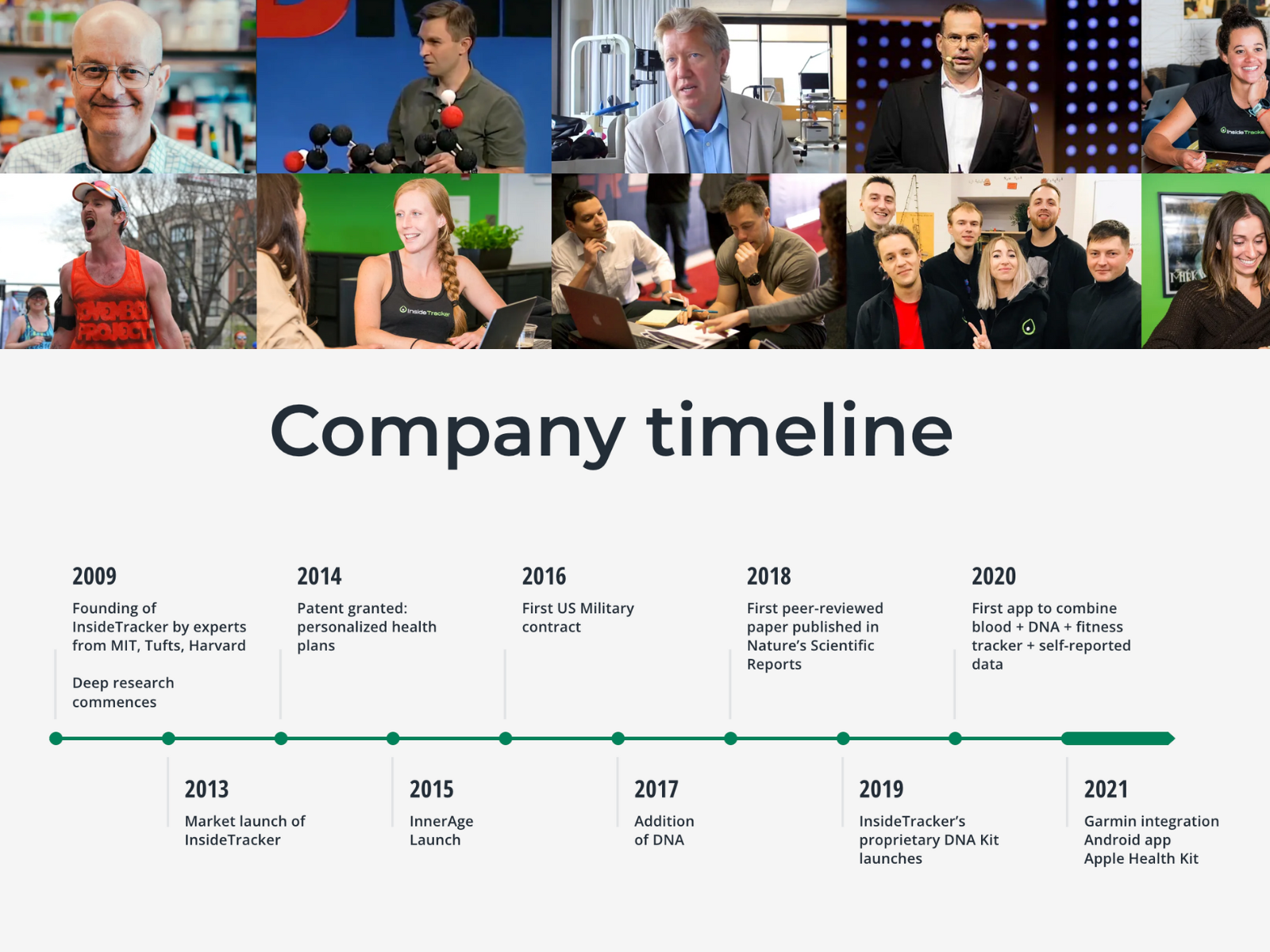
The company’s big idea is that every person’s body tells a data-led story. InsideTracker hopes to use that data in a more intuitive way and make it more accessible to everyday people.
As Blander and his team’s “science experiment” turned into a full-fledged company, InsideTracker brought on serious investors like ASF Venture Capital and OurCrowd and advisors like David Sinclair, Ph.D. and Professor of Genetics at Harvard University and David Katz, M.D., M.P.H., FACPM, FACP, and Director of the Prevention Research Center at Yale University.
InsideTracker prescribes blood draws through local labs, and then combines lab data, genetics data, and self-reported data in one modern app.
I gave InsideTracker a try, and in this review, I’ll give you the inside track (see what I did there) on the whole process, and share my thoughts on using this service again.
How to sign up for InsideTracker
The sign-up process is pretty straightforward: I used InsideTracker’s website to compare plans and went for the “Ultimate” plan which included a blood test and a health analysis of their signature list of biomarkers.
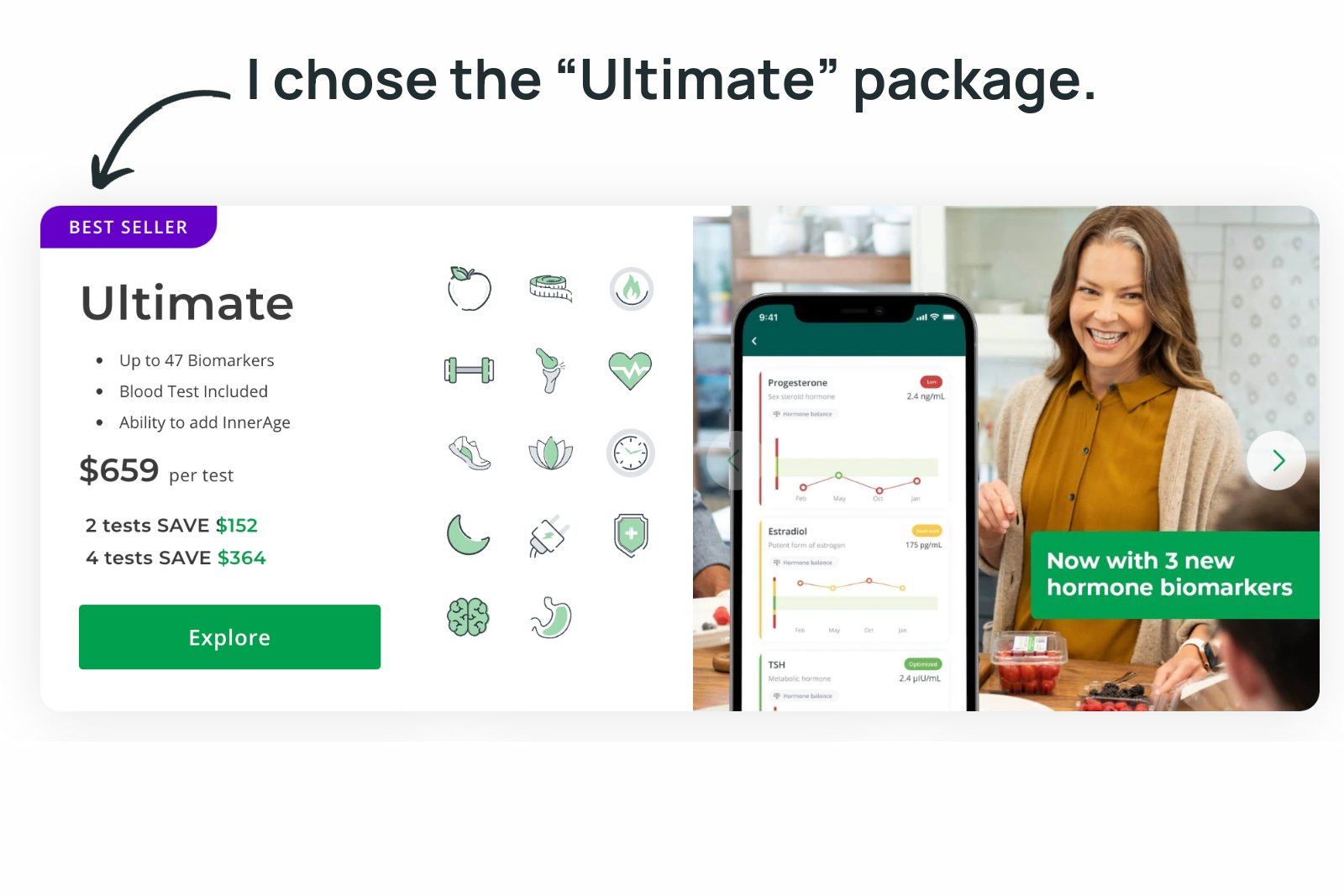
InsideTracker is not covered by insurance. However, InsideTracker plans are eligible for coverage by HSA/FSA/HRA benefits under most insurance. And they do have sales from time to time.
If you already have bloodwork and want to access InsideTracker’s app interface, the company offers a $119 upload option (no bloodwork included). You can also select an optional InnerAge test and a DNA test. The InnerAge is a combined metric based on your overall blood results. InsideTracker’s DNA test analysis of 38 genetic insights predicts health conditions like muscle weakness, menopausal age, and cognitive aging. The InsideTracker app combines all of this data to form a full health picture. (I did not opt for the DNA or InnerAge test for this review.)
Here’s a breakdown of available plans from InsideTracker. (Note that the data upload plan may be best for anyone whose insurance offers inexpensive blood draws.)
| Plan | What’s Included | Region | Price |
| Ultimate (what I reviewed) | Up to 48 Biomarkers Blood Test Included | U.S. Only | $699 |
| Ultimate Plan + DNA Kit + InnerAge 2.0 Bundle | Up to 48 Biomarkers Blood Test Included Free DNA Kit Inner Age Analysis | U.S. Only | $798 |
| 2 Ultimates + 2 InnerAge 2.0 | 2 Ultimate Plan Blood Draws 2 Free InnerAge 2.0 Calculations Blood Tests Included | U.S. Only | $1,388 |
| 4 Ultimates + 4 InnerAge 2.0 | 4 Ultimate plan blood draws 4 free InnerAge 2.0 Calculations Blood Tests Included | U.S. Only | $2,681 |
| Blood Results Upload | Upload results up to 30 times per year Analysis of past and future bloodwork Blood Test NOT Included | Available Worldwide | $119 / year |
| DNA Upload | See how your DNA impacts your health Detailed analysis of prior genetic testing DNA Test NOT Included | U.S. Only | $29 / test |
After checkout, I received an email prompting me to fill out a 10–15 minute questionnaire that included basic information (height, weight, etc.), family medical history, and lifestyle information (diet, substances, stress, etc.).
The online survey goes to an InsideTracker doctor who approved my bloodwork request. From there, it was time to schedule an appointment at my local Quest Diagnostics. For an additional $99 you can also opt to have a mobile blood draw at your home. Tempting!
InsideTracker scheduled my local lab appointment and sent me a helpful email with the date, time, and the following preparation instructions:
- Fast: All InsideTracker blood tests require a 12-hour fast immediately preceding the test.
- Refrain from Exercise: Do not engage in strenuous exercise for 48 hours before the blood test. Beginner weight-lifters should avoid lifting for at least 7 days before their InsideTracker blood test.
- No Alcohol: Do not drink any alcohol for at least 24 hours prior to testing.
- Hydrate: Drink extra water before the blood test to ensure proper hydration.
- Have ID Ready: Bring your photo ID to any tests conducted at Quest Diagnostics.
- Supplements: We recommend not taking any supplements for at least 24 hours prior to testing. If you are taking Biotin please stop this supplement 72 hours prior to testing. Please continue taking medications based on guidance from your physician.
- Sickness: To ensure accurate test results, we recommend you wait two weeks if you feel unwell before taking the test.
- Regarding Amoxicillin: Most blood tests won’t be affected if you take antibiotics, but amoxicillin can sometimes cause falsely high glucose levels. To be on the safe side, we suggest waiting for 48 hours after your last dose of amoxicillin before taking the test, even though it usually leaves your body within 24 hours.
The blood draw itself was straightforward and took just a few minutes.
Receiving my results
About a week later, I got an email instructing me to log into my InsideTracker account to view my results. I chose to view my results through the InsideTracker mobile app (you can also use their website). The app experience is modern and easy to follow, and my results were organized by order of importance. (It’s worth noting that InsideTracker is HIPAA compliant — more info on that here.)
“This is the most exciting part of InsideTracker: I could use the app for regular blood draws over multiple years.”
I was pleased to see that the app has features that let me track my health indicators over time (with future bloodwork). Of course, I’d need to purchase additional tests or sign up for the data upload program to keep this information up to date. InsideTracker suggests that folks get their blood drawn 2–3 times a year for optimal tracking and performance.
And here’s the most exciting part of InsideTracker: I could use the app for regular blood draws over multiple years and have my own medical file supporting future health decisions.
Interpreting my InsideTracker results
Up until this moment, the InsideTracker experience was a breeze. The service is much easier than getting myself to a traditional doctor’s visit. But now I had my results, I quickly realized I might need more specialized care in order to tackle what surfaced in my results.
My cortisol, magnesium, white blood cells, and eosinophil all came in red, and based on a bit of Googling, I felt I should take these results seriously.
“The app gave simple descriptions of my scores and pointed me to online resources, and it even generates an “Action Plan” with a mix of good health and wellness advice.”
The app gave simple descriptions of my scores and pointed me to credible online resources. It even generated an “Action Plan” with a mix of good health and wellness advice like prompts to exercise and suggestions for diet upgrades and potential supplements. But, for me, the question of “what to do” still felt unanswered.
In InsideTracker’s defense, I’m not sure a traditional doctor would have offered much other than a few lifestyle suggestions and some symptom-management medication. It’s just that ultimately, I needed more. Especially after Googling the health impact of my specific imbalances.
“InsideTracker adds some convenience to the process, but the power of access to your own data is the biggest win for consumers.”
I decided to set up a virtual visit with an unaffiliated naturopathic doctor to get her thoughts on my bloodwork. She walked me through the results, offered supplement ideas, and suggested more daily meditation (hello, cortisol!). Thanks to the InsideTracker legwork, one virtual consultation was all it took to get me on the right path. In theory, this naturopath could have drawn my blood (with an in-person visit), and she may have prevented some of my initial moments of panic after my results came in. On the flip side, there’s something empowering about owning my data and getting a look at it before the explanation. Plus, if my levels had been normal, I would have fully benefited from the convenience of InsideTracker’s virtual services.
Will I use InsideTracker again?
The short answer is yes. InsideTracker didn’t remove my need for professional guidance but it did give me a brand new sense of control and a place to build a personal health file over the course of years to come. I’m still young, but my experience with InsideTracker reinforced for me that I need to keep a regular schedule for health check-ins. Keeping an eye on my personal data means I’m invested in the process, and more likely to continue down this path.
It turns out that the simple app experience and capability for long-term tracking are the real innovations here. While InsideTracker adds some convenience to the process, you may need to seek out a professional to address your results. Ultimately, I found that the power of access to your own data is the biggest win for consumers.
I’ll be back next year, and hopefully, my supplements and meditation will show measurable results on my new InsideTracker charts.
Blake Cadwell is a triathlete, girl dad, and the Founder of Soundly.com.

